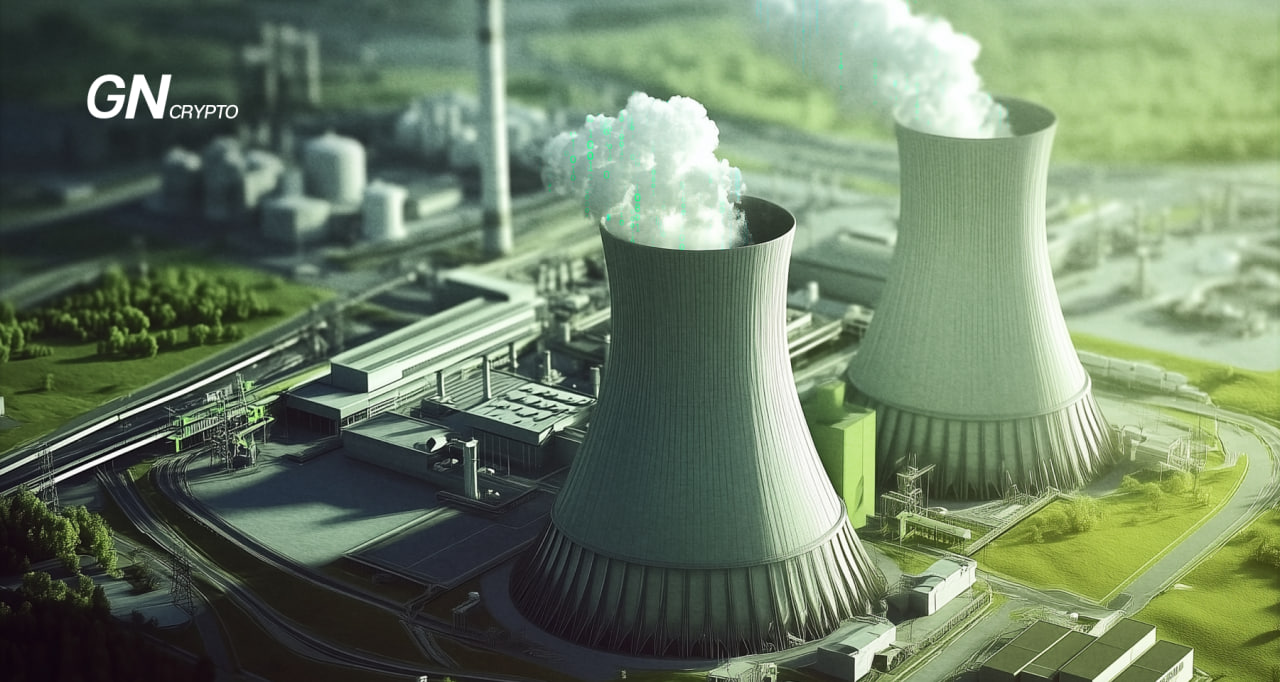Nuclear-Powered AI: The Shape of the Future

The tech sector is gearing up to roll out data centers powered by nuclear energy, including small modular reactors (SMRs) and conventional nuclear power plants. The aim is to address the increasing energy needs driven by artificial intelligence.
On this page
As we reported earlier, the energy required to meet the demands of AI is increasing by around 30% per year. World Economic Forum experts predict that by 2028, global AI will consume more energy than Iceland does annually—a small, cold country. The main concern is not an energy shortage for AI but that data centers (DCs) will rely on energy from fossil fuels for full operation. This is causing strong objections from advocates of the global shift to renewable energy.
The idea of using small modular reactors (SMRs) to power major data centers began gaining traction back in 2022. Experts then forecasted that it would take 10–15 more years before SMRs could be used commercially. However, their predictions now seem overly pessimistic.
Small modular reactors (SMRs) are nuclear reactors of smaller size. The International Atomic Energy Agency (IAEA) explains that these systems can generate from 10 MW to several hundred MW of electricity. Furthermore, these plants only need to be refueled every 3–7 years, compared to the annual refueling needed at most conventional nuclear power plants.
Some SMRs are designed to operate for up to 30 years without refueling
IAEA specialists state.
SMRs are far from a new concept. Since the mid-20th century, mini-reactors have powered U.S. Navy ships, and today there are over 80 vessels in the American nuclear fleet. However, SMR projects for commercial purposes remain in the development or implementation stages. The IAEA believes that increasing the use of nuclear power plants, large and small, will help pave the way to a carbon-free future, a concept tech giants seem to have embraced.
Image illustrating the relatively modest size of an SMR. Source: IAEA
In January 2024, Archana Manoharan was appointed Director of Nuclear Technology at Microsoft. She had previously held a senior role at Ultra Safe Nuclear Corporation, a company working on SMR technologies. At Microsoft, Ms. Manoharan will oversee the development of small modular reactors, which the company plans to use to power its data centers in the coming years.
In early March 2024, Amazon Web Services acquired the Cumulus data center from Talen Energy, which controls around 12.4 GW of energy infrastructure in the U.S. The $650 million deal includes a 960 MW data center in Pennsylvania, powered by a nearby nuclear power plant. A month earlier, in February 2024, the e-commerce giant invested in carbon-neutral energy for its data centers, signing a power purchase agreement with a wind farm.
Cumulus Data Center. Source:www.world-nuclear-news.org
In mid-August 2024, U.S.-based IP3 Corporation (nuclear energy specialists) and Green Energy Partners began construction on the Surry Green Energy project, a new data center in Virginia powered by small modular reactors (SMRs) and renewable energy. The project calls for 4–6 SMRs to supply energy to up to 30 data centers. Data centers in Virginia currently handle over 70% of the world’s internet data and rely primarily on fossil fuels, consuming 25% of the energy used by the state’s businesses and homes. The Surry Green Energy Center aims to alleviate Virginia’s energy system and reduce the AI industry’s carbon footprint while meeting the growing power demands of data centers.
Surry Green Energy, in development. Source: www.ip3international.com
In September 2024, Oracle Corporation, an American company, joined the race for commercial SMRs. As a reminder, Oracle was the third-largest software company globally in 2020 in terms of market capitalization and sales. Its leading products include Oracle Database and cloud computing. Oracle plans to expand significantly in the data center sector.
Oracle has 162 cloud datacenters, live and under construction throughout the world. The largest of these datacenters is 800 megawatts, and it will contain acres of Nvidia GPU clusters able to train the world's largest AI models. Soon Oracle will begin construction of datacenters that are more than a gigawatt
said Larry Ellison, the company’s co-founder and CTO.
At the same time, the tech giant was granted approval to build three small modular reactors, which will provide energy to a data center with AI computing power surpassing 1 GW.
Even though the business sector is ready to embrace the widespread deployment of SMRs, many people still link nuclear energy with high risk, largely due to the accidents at Chernobyl in Ukraine and Fukushima in Japan. Nonetheless, experts say these fears are not justified when it comes to small modular reactors.
SMRs are considerably smaller than the large power plant reactors most of us are familiar with. Thus, SMRs pose far less risk due to their scale, simple design, and inherent safety characteristics of the reactor
specialists assert.
As data centers keep expanding and the demand for renewable energy exceeds the available supply, AI market players seem to have found a reliable, sustainable power source. Today, companies are launching the first AI projects powered by nuclear energy, with new data centers utilizing both traditional nuclear plants and small modular reactors for their needs.
The content on The Coinomist is for informational purposes only and should not be interpreted as financial advice. While we strive to provide accurate and up-to-date information, we do not guarantee the accuracy, completeness, or reliability of any content. Neither we accept liability for any errors or omissions in the information provided or for any financial losses incurred as a result of relying on this information. Actions based on this content are at your own risk. Always do your own research and consult a professional. See our Terms, Privacy Policy, and Disclaimers for more details.




























